Michel Guino (1926-2013)
Michel Guino is a French sculptor. Working with recycled materials, his work is marked by the use of metal, in particular jet engine fins and propellers that he recovers from scrap merchants. Discover Michel Guino's catalog raisonné.

Works of art by artist Michel Guino
-

Petite sonate aztèque
Michel Guino
-

L'homme végétal
Michel Guino
-
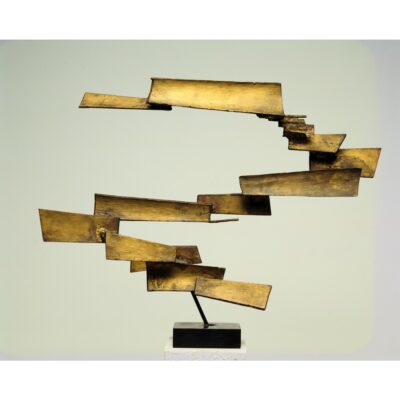
Valparaiso
Michel Guino
-

Petite sonate
Michel Guino
-

Réacteur en acier
Michel Guino
-
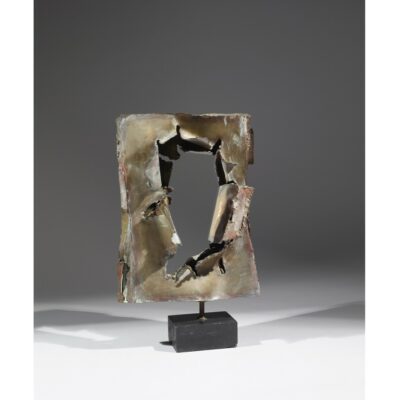
Petite porte éclatée
Michel Guino
-

Papier froissé
Michel Guino
-
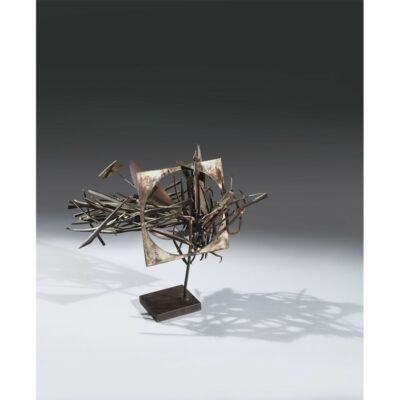
Au cœur du mur
Michel Guino
-

Le grand ventôse II
Michel Guino
-

Hélice en aluminium
Michel Guino
-

Malouine
Michel Guino
-
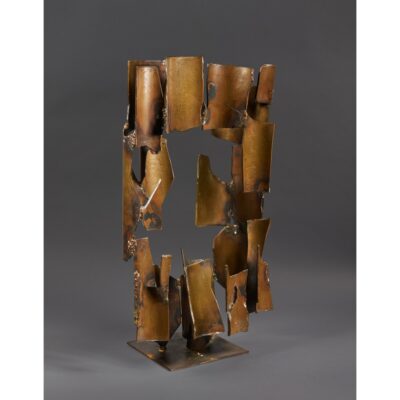
Construction
Michel Guino
-

Table 2
Michel Guino
-

Table 1
Michel Guino
-

Impatience II
Michel Guino
-

Jeu d'échecs
Michel Guino
-

La Grande Ombre
Michel Guino
-
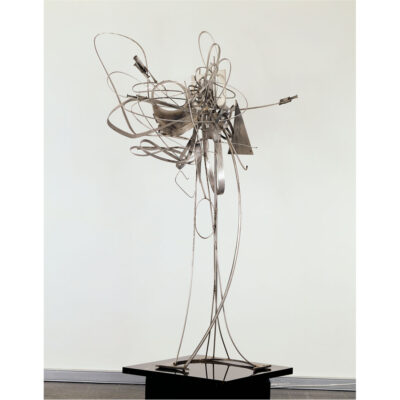
Grande Impatience
Michel Guino

Michel Guino artist biography
Michel Guino was born in Paris on September 28, 1926, to Gabrielle Borzeix and Richard Guino, the third of six children. It was in the studio of his father, a sculptor of Catalan origin, that he came into contact with the world of art and form from an early age. After attending the Académie de la Grande Chaumière in 1943, the following year he entered the École des Beaux-Arts in Paris, where he met César, Albert Féraud and Philippe Hiquily, who had also studied with Marcel Gimond. In 1946, Michel Guino moved with a group of artists to Oppède-le-Vieux, a village in the Vaucluse region. There, in the absence of marble or bronze, too expensive for his fledgling career, Guino worked mainly with stone, which he found in abundance, and plaster, which was inexpensive. Driven by the same concern for economy, he began to explore salvaged materials. In 1948, he married Lise Prévost, from whom he later separated, but with whom he had three children: Clotilde, Isabelle and Guillaume. That same year, he discovered the work of Julio Gonzalez, a Catalan like his father, whose work enlightened and stimulated him, showing him the way to metal.
In 1951, he fully embraced metal sculpture: brass, lead and iron became his materials. Metal," writes Guino, "allows us a new space, a more cosmic conception of form and light, which remains the real material to handle. His first metal sculptures were mainly spindly figures made from salvaged metal objects: horse-shoeing nails, keys and foundry dross were his raw materials. He then progressively explored and experimented with abstraction: "Initially largely figurative, his works soon became lighter, purer and more ethereal, while remaining marked for a long time by obvious references to human morphology", writes Jean-Luc Epivent.
Contact
To find out more about our art gallery in Paris, the works available, our appraisal service or our exhibitions :
